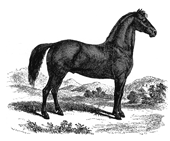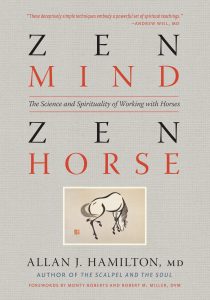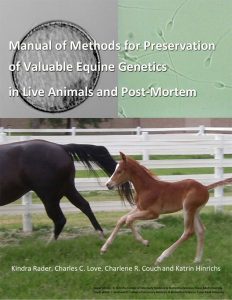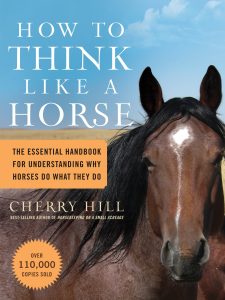
Breed Facts
Status:
Critical
Use:
Endurance, Pleasure Riding, Hunting, Driving, Ranch Work
Adult Weight:
700-900 lbs.
Adult Height:
113.2-15 hands
Temperament:
Even, Gentle Disposition
Experience Level:
Novice
Notes:
Some are gaited; unusually long stride; forms strong bond with owner
COLONIAL SPANISH
Horses roamed the Americas for millions of years, but for a time, and for unknown reasons, they vanished. Horses returned with the first explorers, beginning with Columbus, who brought horses from Spain to the West Indies on his second voyage in 1493. Additional Spanish horses were brought to the mainland by Cortés in the early 1500s, and there were horses in South America and Florida by the mid-1500s.
The Colonial Spanish horse is a group of closely related breeds that descend from these horses brought by Spanish explorers, conquistadors, and colonists. Horses made a significant contribution to Spanish prosperity in the Americas, and both domestic and free-range herds spread far and wide. For centuries, Spanish horses were the most common type of horse throughout the Southeast and the regions west of the Mississippi.
However, beginning in the mid-to-late 1800s, almost all Spanish horses were crossbred with or were replaced by larger animals, including Thoroughbreds, other riding breeds, and draft horses. Ubiquitous between 1750 and 1850, the pure Spanish horse in North America was almost extinct by 1950, with only a few herds of pure Spanish horses remaining in the Southeast and the Southwest. These were owned by traditional ranchers or Native American tribes, or were found in isolated, free-ranging herds. From these remnants, conservation programs were begun by several groups of dedicated breeders.
The North American Spanish horse population includes many distinct strains, and these could be considered either part of a larger, single breed, or several smaller, closely related breeds. Given the overall consistency of this population and the fact that many individual horses are registered in more than one of the registries, The Livestock Conservancy has chosen to consider them as one breed, Colonial Spanish, while recognizing the importance of the unique regional adaptations of individual strains.
(It is important to note that in North America, the name “Colonial Spanish Horses” is rarely used; they are usually called “Spanish Mustangs”. The term “mustang” carries with it the unfortunate connotation of any feral horse of any genetic background, so this term serves poorly in several regards. Many Colonial Spanish horses have never had a feral background but are the result of centuries of careful breeding. Also, only a very small minority of feral horses (mustangs) in North America qualifies as being Spanish in type and breeding.)
Colonial Spanish horses are known many regional names, including Spanish Mustang, Spanish Barb, or their strain name (Marsh Tacky, Choctaw, etc.). Regardless of the name, they share conformational features that distinguish them from other riding breeds. They are small, standing 13.2-15 hands (54-60″) at the withers (with an average of around 14 hands) and weigh 700-900 lbs. Colonial Spanish horses have broad foreheads and narrow faces, and their heads may vary from long and finely made to short and deep. Their profiles may be straight, concave, or, more rarely, convex.
These horses are generally short-coupled and deep-bodied, but narrow when viewed from the front – their front legs join the chest in the shape of an “A” rather than the “U” commonly seen in the stock horse breeds. They have a sloping croup and a low-set tail. From the back, the muscling of the hip tapers up so the backbone is the highest point. Their hooves are small and upright.
Nearly all colors found in horses occur in this breed. Solid colors include black, grullo, bay, dun, buckskin, chestnut, red dun, palomino, and cream. Gray and roan are common, as are every sort of paint (including frame, sabino, and tobiano) and the leopard complex of colors commonly associated with the Appaloosa breed (including blankets, leopards, and varnish roans). Indeed, Spanish genetics is the source of the color in the Paint, Pinto, Appaloosa, Pony of the Americas, Palomino, and other breeds. The Spanish horse has also made substantial contributions to the American gaited breeds and to the American Quarter Horse and other stock horse breeds.
Spanish horses are athletic and useful for a variety of riding disciplines, including ranch work, endurance competitions, and pleasure riding. They have an unusually long stride, and many of them are gaited, including a running walk, single foot, amble, pace, and the “paso gait” in some of the more Southerly strains. They are known for their even temperament and gentle disposition. They are a tough, strong, intelligent breed, that can form a strong bond with their owner.
Several states have recognized various Colonial Spanish breeds as their state horse: Colonial Spanish Mustang in North Carolina and Marsh Tacky in South Carolina, and the Florida Cracker horse in Florida. In 2013 the Oklahoma Colonial Spanish Mustangs (Choctaw ponies) were declared the Official Heritage Horse of Oklahoma.
Despite an increase in numbers, Colonial Spanish horses of all strains remain in need of new conservationists.
Did you know:
You don’t have to raise livestock to be a member of The Livestock Conservancy. Join foodies, fiber artists, history lovers, biodiversity fans, and those who value sustainability in changing environments. Together, we can save endangered breeds of livestock and poultry from extinction. Click here to learn more.
You may be interested in…
Managing Breeds for a Secure Future
By Dr. Phil Sponenberg, Dr. Alison Martin, Jeannette Beranger
$34.95
Manual of Methods for Preservation of Valuable Equine Genetics
By Kindra Rader, Charles C. Love, Charlene R. Couch and Katrin Hinrichs
$19.95

Breed Facts
Status:
Threatened
Use:
Endurance, Riding, Hunting, Driving
Adult Weight:
700 – 900 lbs
Temperament:
Even, Gentle Disposition
Experience Level:
Novice
Notes:
Some are gaited, have long stride
You may be interested in…
Managing Breeds for a Secure Future
By Dr. Phil Sponenberg, Dr. Alison Martin, Jeannette Beranger
$34.95
Manual of Methods for Preservation of Valuable Equine Genetics
By Kindra Rader, Charles C. Love, Charlene R. Couch and Katrin Hinrichs
$19.95





